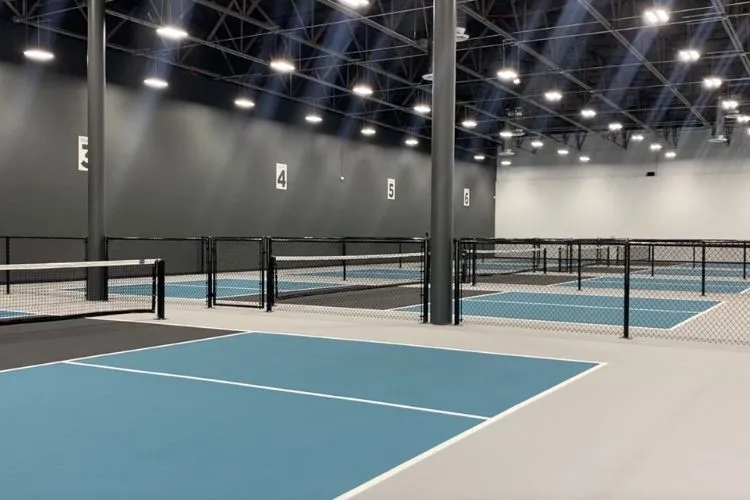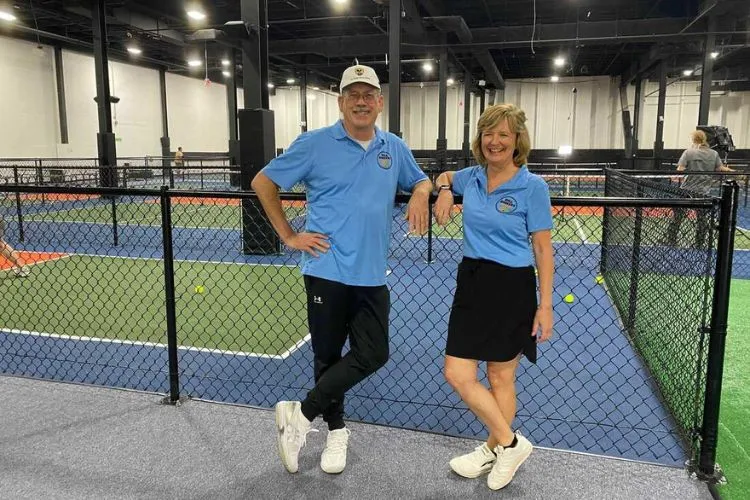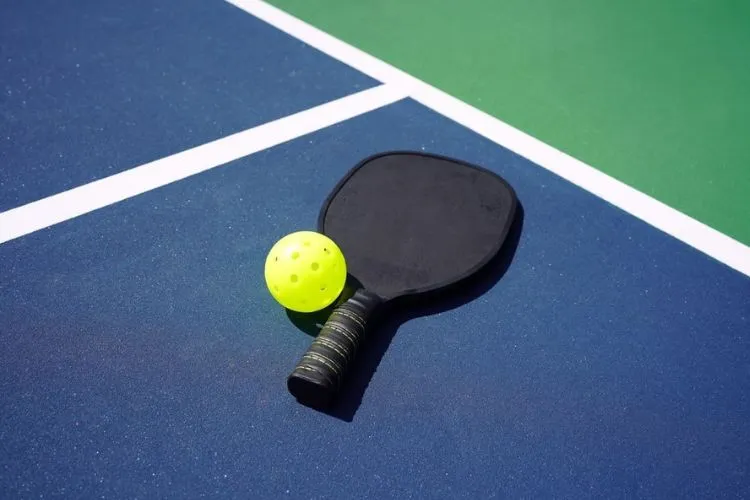Pickleball, a popular racquet sport, is quickly capturing the interest of sports enthusiasts worldwide. The allure of the game, a fun combination of tennis, badminton, and table tennis, is indeed difficult to resist.
Consequently, an increasing number of individuals and corporations are considering investing in their own indoor pickleball facilities.
But, do you know how much does it cost to build an indoor pickleball facility?
Well, understanding the financial aspects of building such an infrastructure is vital before jumping in headfirst.

How Much Does It Cost To Build An Indoor Pickleball Facility?
The cost to build an indoor pickleball facility varies significantly based on several key factors: the cost of land, the size of the facility, choice of materials, and local labor costs.
A common starting point could be anywhere between $10,000 to $25,000 per court for construction to build an indoor pickleball facility, but that’s just a fraction.
When taking into account the cost of land, which varies by location, the price tag could rise considerably. Urban areas generally command a higher land cost than suburban or rural locales.
Other elements playing into the total are infrastructural costs, permit fees, and the installation of amenities such as restrooms, seating, lighting, and sound systems. Also, budget for frequent maintenance to keep the facility in top shape.
With all these parameters in mind, you’d be looking at an investment easily upwards of $200,000 for a small to medium-sized facility in a moderately priced location.
However, a larger venue, in a prime location, with state-of-the-art amenities, could run into the millions. Ultimately, the total cost highly depends upon your specific circumstances, choices, and constraints.
Certainly, enriching each section with additional relevant information will provide a more comprehensive insight into the process of building an indoor pickleball facility.
Understanding the Factors Influencing Cost
Building an indoor pickleball facility involves a complex interplay of certain cost-influencing factors. Delving deeper into the financial dynamics is crucial for a well-planned investment.

Land Feasibility and Location
Purchasing land is typically one of the largest expenses in constructing a pickleball facility. The cost of land varies greatly based on:
- Geographical Location: The price per square foot can drastically differ from downtown in a city to a rural area. The decision should take into consideration factors such as customer access, neighborhood demographics1, and competition levels.
- Zoning Regulations and Permits: Local zoning laws can dictate where you can build a sports facility. Changing the zoning designation of a property can be a lengthy process. Also, permits, environment clearances, and fire safety inspection costs can add up and need to be factored into the budget.
- Site Preparation: The cost of prepping the land is often overlooked. This can include grading, tree removal and clearing, laying utilities (water, sewer, electric), and laying the foundation. In some cases, you may need to consider the costs of building access roads.
Size and Scale
The scale of your indoor pickleball facility can significantly impact the overall project budget:
- Number of Courts: The cost multiplies with each additional court. A larger facility may also require amenities such as an adequate ventilation system, temperature control management, and specialized sports flooring.
- Additional Amenities: Spaces for locker rooms, bathrooms, office/administration, a lounge or cafe, locker rentals, and pro shops contribute to the overall size and subsequently to the cost.
- Maintenance and Utility Costs: Larger facilities will have higher ongoing utility costs such as electricity, water, and waste management. Similarly, more frequent maintenance will be needed for cleaning, HVAC servicing, and court resurfacing.
Materials
The choice of materials is essential in determining the durability, safety, and overall playing experience of the pickleball facility:

- Indoor Court Surface Material: You could choose several flooring types such as wood, vinyl, or synthetic. Among these, synthetic surfaces are typically more durable and easier to maintain but come with higher upfront costs2.
- Building Materials: Making use of energy-efficient and durable construction materials such as special insulating panels can lead to notable long-term savings. However, such materials could carry a higher upfront cost.
- Equipment: Post-construction installations like nets, posts, and scoreboards could also add to the budget. Expenses on higher-quality equipment could offer a better return on investment with minimal maintenance or replacement needs.
Labor Costs
Labor costs are a significant component of the construction budget and can vary based on:
- Local Labor Market: Wage rates differ among regions, and areas with high labor costs can significantly inflate the overall budget.
- Skilled vs. Unskilled Labor: The installation of sports flooring and other specialized amenities will require skilled workers, who generally command higher wages.
- Labor Availability and Scheduling: Availability of workers and their efficient scheduling can impact how quickly the project can be completed, affecting the labor costs and potentially the overall project timeline.
Frequently Asked Questions (FAQs)
u003cstrongu003eHow much does it cost to build an indoor pickleball court?u003c/strongu003e
While this varies greatly based on the factors above, you could expect to spend anywhere between $10,000 to $25,000 per court.
u003cstrongu003eAre there additional recurring costs to maintain a pickleball court?u003c/strongu003e
Yes, maintenance costs like court resurfacing, equipment repair and replacement, utility bills, and cleaning services should be taken into consideration.
u003cstrongu003eCan I earn revenue from a pickleball court?u003c/strongu003e
Definitely! Court rentals, leagues, tournaments, and lessons are just a few strategies to generate income from your facility.
Conclusion:
The construction of an indoor pickleball facility is undoubtedly a significant investment. However, understanding the factors involved, from land acquisition to building costs, along with some smart planning strategies, can make this venture not just feasible, but highly rewarding.
Always remember to take into consideration the financial commitment needed, both upfront and ongoing, to ensure the success of your project.

Pickleball’s more than a game to me—it’s a passion. I write, sharing its highs and lows, the thrills and the lessons. Some tales might draw you to the court, while others give a hint of the game’s magic. So, curious about my journey? Ready to dive deep into the world of pickleball with me? Let’s go.
